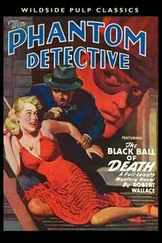Up to the middle of 1349, the Flagellants had things pretty much their own way. Central and southern Germany was their favoured hunting ground but they spread freely over Hungary, Poland, Flanders and the Low Countries. In March they were in Bohemia; April, Magdeburg and Lübeck; May, Würzburg and Augsburg; June, Strasbourg and Constance; July, Flanders. Their numbers were formidable and their needs often strained the resources of their hosts. A single monastery in the Low Countries had to provide for 2,500 pilgrims in a matter of six months; in two and a half months 5,300 Flagellants visited Tournai; when the crusade arrived at Constance it was even claimed that there were 42,000 men in the company. If anyone opposed them their reaction was ferocious. Mendicant friars in Tournai who objected to their pretensions were dismissed as scorpions and Antichrists and, near Meissen, two Dominicans who tried to interrupt a meeting were attacked with stones and one of them killed before he could escape.
From the start, however, a few doughty spirits had declined to be intimidated. The magistrates of Erfurt refused entry to the Flagellants and neither from the Brethren themselves nor from the citizens was there any attempt to defy their ruling. Archbishop Otto of Magdeburg suppressed them from the start. In Italy they made little impression; perhaps the example had not been forgotten of Uberto Pallavicino of Milan who, in 1260, hearing that a Flagellant procession was on the way, erected three hundred gibbets outside his city. The hint was taken and the pilgrims never came. In France they were beginning to gather popular support when Philip VI, showing unusual determination, prevented their penetrating beyond Troyes.
According to Robert of Avesbury they arrived in London in May (or possibly September) 1349, {173} 173 22 R.S. 93, pp. 407–8.
but Walsingham, who also records the visit, puzzlingly delays it to 1350, by which time the movement had long been on the wane. {174} 174 23 Historia Anglicana, R.S. I, p. 275.
‘…there came into England,’ wrote the latter, ‘certain penitents, noblemen and foreigners, who beat their naked bodies very sharply until the blood ran, now weeping, now singing. Yet, as was said, they did this too unadvisedly, since they had no licence from the Apostolic See.’ Robert of Avesbury puts their numbers at more than six score, ‘for the most part coming from Zealand and Holland’. They are only known to have held one ceremony in London, on the open plot in front of St Paul’s. They seem to have met with indifference or even hostility and were rapidly deported as unwanted guests.
But the turning point came with the declaration of war by the Church. In May 1348 Pope Clement VI had himself patronized ceremonies involving public flagellation within the precincts of his palace at Avignon but he took fright when he saw that he could not control the movement which he had encouraged. Left to himself he would probably have turned against them sooner, but members of the Sacred College prevailed on him to hold his hand. In mid-1349, the Sorbonne was asked for its opinion and sent to Avignon a Flemish monk, Jean da Fayt, who had studied the phenomenon in his homeland. It seems that his advice was decisive. Shortly after his arrival, on 20 October 1349, a papal Bull was published and dispatched to the Archbishops. This was followed by personal letters to the Kings of France and England. The Bull denounced the Flagellants for the contempt of Church discipline which they had shown by forming unauthorized associations, writing their own statutes, devizing their own uniforms and performing many acts contrary to accepted observances. All prelates were ordered to suppress the pilgrimages and to call on the secular arm to help if it seemed necessary.
That the Pope meant business was shown when a party of a hundred Flagellants arrived in Avignon from Basle. Clement promptly interdicted public penance and prohibited their pilgrimages under threat of excommunication. Emboldened by his example, the rulers of Europe turned on the Brethren. Manfred of Sicily threatened to execute any Flagellant who appeared in his lands; {175} 175 24 R. Hoeniger, Der Schwarze Tod in Deutschland, Berlin, 1882, p. 14.
Bishop Preczlaw of Breslaw made threats reality and had a Master burned alive. The German prelates took up the attack with especial relish. The Flagellants were denounced from the pulpit as an impious sect and harsh penalties were threatened against any who failed to return humbly to the bosom of the Church. Even those who obeyed were likely to find themselves in trouble if they had played a prominent part in the movement and hundreds were incarcerated, tortured or executed. In 1350 many Flagellants were in Rome enjoying a busman’s penance by being beaten in front of the High Altar of St Peter’s.
The Brethren of the Cross ‘vanished as suddenly as they had come, like night phantoms or mocking ghosts.’ {176} 176 25 Henry of Herford, op. cit., p. 282.
The movement did not die, indeed it was still to be encountered in the fifteenth century, but, as a threat to society or an additional headache to those grappling with the problems of the Black Death, it had effectively ceased to exist.
It is easy to poke fun at these misguided fanatics. Their superstitions were ridiculous, their practices obscene, their motivation sometimes sinister. But before condemning them one must remember the desperate fear which drove the Flagellants into their excesses. These were men who put themselves to great pain and inconvenience; in part, certainly for the sake of their own souls and their own glory, but in part also in the hope that their sacrifice might induce God to lift from his people the curse that was destroying them. There were few saints among them but, on the whole, they were not bad men. And it is impossible not to feel some sympathy for the person who, when disaster threatens, tries to do something to oppose it, however futile, instead of waiting, in abject despair, for death to strike him down.
They did achieve something. In some at least of the towns they visited they brought about a spiritual regeneration, ephemeral, no doubt, but still real while it lasted. Adulterers confessed their sins, robbers returned stolen goods. They provided some diversion at the places along their route and left behind them a fleeting hope that their pain might bring an end to the greater sufferings of the plague-stricken. But when the Flagellants had passed, often leaving new centres of infection in their wake; when the miracles did not happen, the sick did not recover, the plague did not pass; then the condition of those they left behind them must have been even worse than before they came. On the whole they probably did more harm than good.
One thing at least it is hard to forgive. In his Bull condemning them, Pope Clement VI complained that ‘most of them… beneath an appearance of piety, set their hands to cruel and impious work, shedding the blood of Jews, whom Christian piety accepts and sustains’. The persecution of the Jews during the Black Death deserves special attention. The part which the Flagellants played in this repugnant chapter was only occasionally of the first importance but it was nonetheless barbarous for that.
* * *
When ignorant men are overwhelmed by forces totally beyond their control and their understanding it is inevitable that they will search for some explanation within their grasp. When they are frightened and badly hurt then they will seek someone on whom they can be revenged. Few doubted that the Black Death was God’s will but, by a curious quirk of reasoning, medieval man also concluded that His instruments were to be found on earth and that, if only they could be identified, it was legitimate to destroy them. What was needed, therefore, was a suitable target for the indignation of the people, preferably a minority group, easily identifiable, already unpopular, widely scattered and lacking any powerful protector.
Читать дальше












